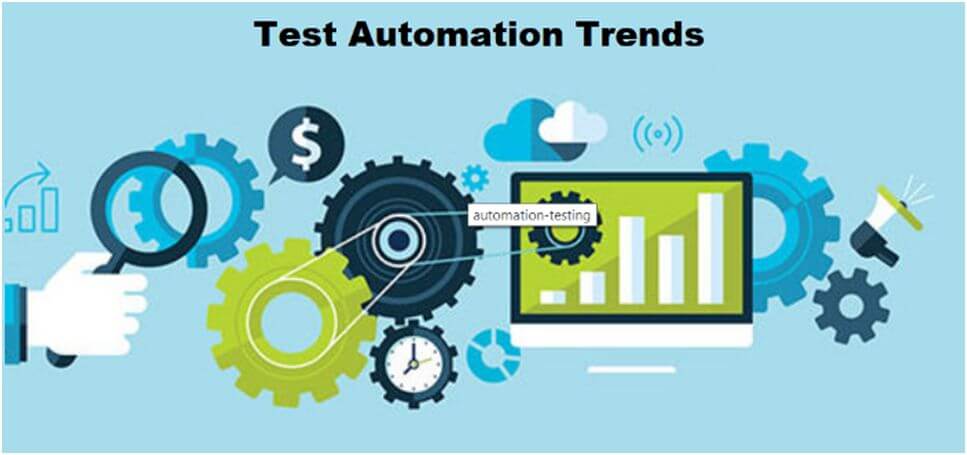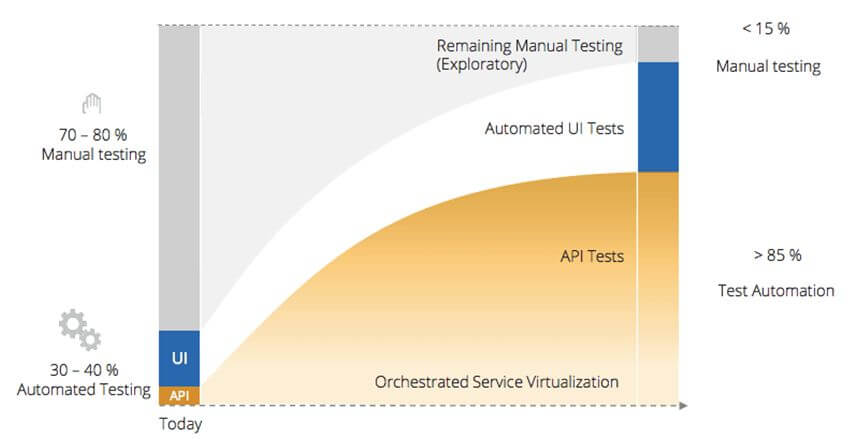
Source: https://engineering.carsguide.com.au/test-automation-7-key-trends-to-watch-in-2024-3fd078f18184
Software testing approaches have evolved significantly over the years, giving way to fresher approaches. Inspired by the manufacturing process, the software industry has adopted the waterfall approach – involving step-by-step checks and case tests – to test for the quality of software. This approach has made it harder for manual testers because there is too much data to be processed to run all the test cases.
The rapid scale of development, triggered by upcoming technologies, is keeping testers on tenterhooks. And now, with the advent of DevOps and Agile development technologies, the software industry is undergoing major disruptions. These changes have led to the emergence of new testing approaches.
The Industry Is Demanding: Quality at Speed
The tremendous changes in technology will continue to affect the way organizations develop, validate, operate, and ship software. Therefore, these organizations need to innovate and reinvent themselves consistently by adopting tools and practices that will let them develop high-quality software quickly. Testing needs to be integrated with product development to facilitate faster delivery. But speed will only increase if the latest tools and technology is available to the development teams.
This post summarizes the 7 test automation trends that will change the landscape of software testing. However, before we look at all the exciting things that might change the outlook of software testing in 2024 and beyond, let’s take a look at what happened in the past year:
- Test automation was the key driver to achieving DevOps.
- There was an increased coding skills expectation for software testers.
- Selenium 4 came out as a W3C standard.
- Machine Learning Automation or AI Automation tools emerged.
Now, here are the 7 test automation trends that will rule the industry.
#1. It’s a Make or Break for AI-Powered Test Automation Tools
Historically, the use of artificial intelligence (AI) and machine learning (ML) is not new in the software testing arena. Computer vision technologies have been used for UI identifying purposes. But recent advancements in AI, with an enormous amount of data available, presents new opportunities for AI/ML-powered testing. Right now, the use of AI is still in the early stages, so organizations need to find more ways to optimize their software testing practices in AI/ML.
Usually, the time and resources needed to triage failing tests can be all-consuming. This situation leaves organizations and testing teams with little time to innovate, as they waste countless hours hunting through log files to ascertain the cause of failures.
AI algorithms generate better test cases, test data, test script, and reports. Smart analytics and visualization enable the development teams to understand the test coverage as well as to detect faults and areas of high risk. Predictive models also come in to improve decision making about what, where, and when to test.
Going into the future, we are likely to see more applications of artificial intelligence and machine learning. These technologies will address problems, such as test case prioritization, quality prediction, and fault classification.

Source: https://www.tricentis.com/test-automation-challenges-strategies/
#2. People Still Matter
After talking about the potential of AI to solve critical testing challenges, you are probably worried about the relevance of testing specialists in the industry.
Let’s calm the tension here. The application of AI will not take away jobs, but it will probably cause the creation of new roles altogether.
As you may already know, a machine can only consider environment variables it receives; it can’t choose to include new ones. As we stand, only humans can do that. Even newly adopted functionalities will still require human oversight.
With that said, software testing professionals will need to cultivate AI-era skills, such as coding, programming, a strong security stance, and a basic understanding of AI/ML algorithms.
#3. A Collaboration of Agile and DevOps
Organizations are no longer looking at having a centralized Test Center of Excellence. Instead, test automation specialists are part of Agile teams. What this means is that DevOps and Agile will rule the roost. Organizations have embraced DevOps as a response to the demand for speed and Agile as a response to rapidly changing requirements.
The software testing landscape is shifting towards quality engineering, even as testing becomes more progressive, interactive, and seamlessly integrated with development. The adoption of both DevOps and Agile will help teams to deliver quality software faster.

Source: https://www.knowledgehut.com/blog/agile/combination-of-agile-devops-the-roots
#4. The Internet of Things Conquest
Today, there are more connected devices than ever before, which means software systems are running in many different environments. So, the lack of testing environments that ensures the right level of test coverage will always remain a change to the testing teams.
For instance, if you are developing cleaner apps for Android, PC cleaning software, or something on how to speed up Mac, you will need to test their usability, compatibility, and reliability. Failure to test the products means that their security, functionality, and effectiveness will come under the scanner.
With IoT growing in leaps and bounds, we expect IoT testing to become the norm. The following are the various types of testing for IoT systems:
- Compatibility Testing to check if devices in an IoT system are compatible
- Security Testing for data privacy controls and validating the user authentication process
- Usability Testing
- Reliability & Scalability Testing
- Performance Testing for checking the performance of connected items in an IoT system
- Data Integrity Testing for validating the integrity of data
#5. Selenium-Less Automation
Over the last few years, Selenium has been the de facto web-based test automation tool. Consequently, many vendors of software testing tools now embrace it. But going into the future, non-Selenium automation-based tools will most likely get some boosts. Most organizations have realized that automation doesn’t necessarily equal Selenium.
While there is nothing wrong with Selenium, it remains just as a tool. And as you know, different teams may have different styles, needs, and preferences. So, as most options become available, the adoption of non-Selenium tools will most likely grow. For instance, Cypress has already developed its own JavaScript-based automation framework that runs inside the browser instead of using the WebDriver.
#6. Consolidation of Tool and Activities
Today, more and more organizations are integrating testing into their software development cycle. In fact, continuous testing is one of the hottest phrases in 2024. The mantra of continuous testing is to test everything from the start and test everywhere in an automated version.
So, as continuous testing gains popularity, more vendors will most likely jump at the chance to create end-to-end testing solutions for the industry.
To accomplish that, most of them will require tools that aren’t part of their current portfolio. As a result, you may see more mergers and acquisitions going forward.
#7. Automation Will Present New Metrics Opportunities
As mentioned earlier, test automation will not serve as a catch-all potion. It will not eliminate the need to measure performance, but it will instead open new opportunities for measuring efficiency.
So, as more development activities move to the API-driven platforms, the urge to stitch these pieces of raw information together to evaluate your organizations’ efficiency will most likely increase. Whether measuring the team in aggregate or individual resources, the metrics can help you affirm qualitative observations, and not necessarily to clinically grade your team.
Conclusion
In this globalized world, users are becoming more and more selective when it comes to the quality of products. Some things such as performance, usability, and security features were usually overlooked before, but they are now critical to these users.
In that connection, testing organizations and teams must stay informed about these needs and technological advancements in the testing industry. They also need to think about the current trends that will have a tremendous impact on the industry. So, feel free to check out Software Tested for additional trends and updates in the world of tech.
Chris Mcdonald has been the lead news writer at complete connection. His passion for helping people in all aspects of online marketing flows through in the expert industry coverage he provides. Chris is also an author of tech blog Area19delegate. He likes spending his time with family, studying martial arts and plucking fat bass guitar strings.